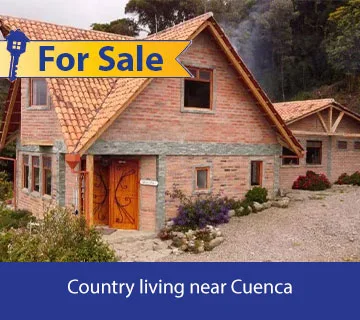Cúpula: Appreciating Colonial Cuenca
By Brian Buckner
Unique architectural elements are something I thrive on.
 My interest began when I owned and operated a window manufacturing plant in the United States. We became quite adept at fabricating historically correct window products that were used to renovate structures listed on the Register of Historic Places. I enjoyed my business and spent a lot of time working with the U.S. Department of the Interior, which regulates the National Park Service, which in turn, oversees the Register of Historic Places. My work found me in the midst of a cornucopia of cool architectural details. Enjoying not only my plant but the front lines, I invested much time working up and down the eastern seaboard with various architects in commercial renovations of old textile mills and other historically significant projects.
My interest began when I owned and operated a window manufacturing plant in the United States. We became quite adept at fabricating historically correct window products that were used to renovate structures listed on the Register of Historic Places. I enjoyed my business and spent a lot of time working with the U.S. Department of the Interior, which regulates the National Park Service, which in turn, oversees the Register of Historic Places. My work found me in the midst of a cornucopia of cool architectural details. Enjoying not only my plant but the front lines, I invested much time working up and down the eastern seaboard with various architects in commercial renovations of old textile mills and other historically significant projects.
 Upon arriving in Cuenca, a few months ago, the impressive building details revealed themselves immediately. Much of what I have seen is quite reminiscent of the architecture of old New Orleans, a city I also like to photograph.Well, having viewed many artistic architectural details, they need to have a uniqueness, a peculiarity of design, to capture my attention. So many things in Ecuador are handmade, I ferret out a good bit that I like to explore further.
Upon arriving in Cuenca, a few months ago, the impressive building details revealed themselves immediately. Much of what I have seen is quite reminiscent of the architecture of old New Orleans, a city I also like to photograph.Well, having viewed many artistic architectural details, they need to have a uniqueness, a peculiarity of design, to capture my attention. So many things in Ecuador are handmade, I ferret out a good bit that I like to explore further.
The accompanying image is one of the coolest architectural features I’ve discovered in Cuenca so far, partially related to it’s simplicity of line, form and materials. This El Centro cúpula is unusual because of its reliance on the sun having a low horizon to light it. No matter early morning or late afternoon light, it begins to glow as if a powerful artificial source is doing the work. There are two colors of glass; the small pink pebbled glass panels of the cupola have been placed above the deep yellow panels with their pressed texture finish.
Another stunning feature is the world wide symbol for music, the lyre, replicated in a somewhat impressionistic manner. Wrought iron was the material used for this decoration. A lyre is placed on each of the cúpulas four sides where it is silhouetted against the yellowish glass when the sun is low in the sky. Music must have been very important to those who ordered this decorative detail. The sloped portions of the cúpula appear to be tin. Showing no rust, this is likely.
Lastly, a distinctive and elegant weather vane tops the cúpula. The upper portion is a bird with wings cut sharply back and a hooked beak, reminiscent of a raptor. Below are globes and the characteristic compass points.
This cúpula is an architectural element of a huge old home in El Centro. I haven’t been able to see this detail from the street, though I’ve sought it. There are four other cúpulas utilized in the architecture of the home and only their finial decorations differ. I can see these details from where I live, seventy feet up, which was the vantage point from which I composed my image.
The cúpula is so unique, set against its backdrop of colorful red roof tiles, that I finished it a little differently. I intentionally handled the post-processing of my image to evoke the feeling of an old and collectible postcard. Consequently, it seemed only right to use an antique deckled border to pull the piece together.
___________________
After a successful career in manufacturing, Brian Buckner sold his commercial window fabrication plant and now makes his home with his wife, Edie, in Cuenca. He is a photojournalist and writer currently producing photo essays and stories of life in Ecuador. He and his wife enjoy hiking, photography, writing and giving their time to those in need. Brian may be reached by email at scottsbluff@hotmail.com.



















